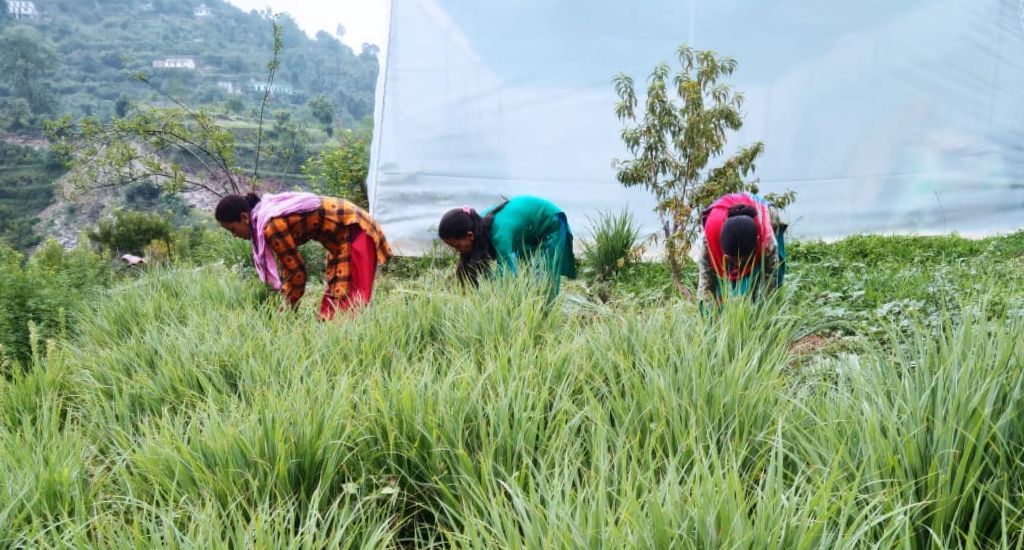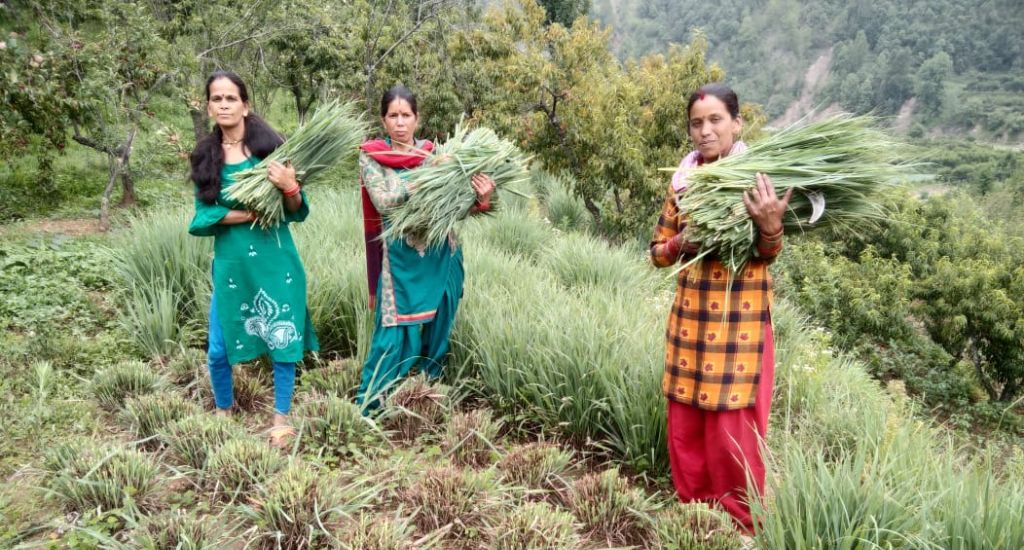
A herbal effect takes root in Uttarakhand’s hills
The terraced fields of Uttarakhand’s villages are fragrant with whiffs of rosemary, thyme and other herbs as farmers harvest the potential of these culinary ingredients to bring prosperity.

The terraced fields of Uttarakhand’s villages are fragrant with whiffs of rosemary, thyme and other herbs as farmers harvest the potential of these culinary ingredients to bring prosperity.
Oregano, basil, chamomile. These are more likely to remind of pizzas and herbal teas, and not so much of a remote village in hilly Uttarakhand where herbal farming is thriving with women sitting together in open courtyards, carefully plucking the leaves off tender stems before spreading them out to dry in the sun.
Yet, that’s as much a real image in the life cycle of herbs that make their way onto people’s plates.
Many women in the villages grow herbs such as rosemary, lemongrass, oregano, basil, lemon balm, chamomile, and stevia on their terraced fields. Some like thyme and jambu – Allium stracheyi, a local culinary herb – grow wild and carpet the fields and rocky forest pathways.
Deepa Lodhial and her husband Harender Singh Lodhial have built a thriving business of herbal farming and selling dried herbs, along with homemade fruit jams, squashes, and pickles, at their shop in Reetha village in Ramgarh block of Nainital district in Uttarakhand. Deepa is also an integral part of the women’s cooperative group, Swabhiman Sahakarita, which produces the goods sold at their shop.
“We were introduced to these herbs around a decade ago when some NGOs who set up office here told us about the positives of growing herbs,” said Deepa.
Also Read: Medicinal herb ushers prosperity for Sagar Island farmers

What initially drew residents to herbal farming in Uttarakhand was the minimal investment required to start. NGOs and the state horticulture department often provided the plants for a nominal cost or even for free, helping farmers reclaim barren and neglected patches of land for this new venture.
Herbal farming in Uttarakhand has become an enticing avenue for generating substantial income, complementing what the farmers earn from traditional crops like fruits and lentils. “We slowly realised the value and popularity of these plants,” said Jeetendra Bisht, a resident of Nathuakhan village. He cultivates various herbs and sells them at his market shop.
“Herbs are being grown in several villages of Nainital and Almora districts,” he said.
A significant portion of Bisht’s produce is purchased by companies involved in the manufacturing of Ayurvedic medicines or cosmetic products. Tourists seeking unconventional experiences in the serene hills also contribute to his clientele.
Herb cultivation offers several advantages in this region of Uttarakhand. Many herbs, like oregano, rosemary, mint, and thyme, are hardy and adaptable to suboptimal conditions. They can withstand the region’s heavy monsoon rainfall and the challenges posed by mountain weather.
Also Read: What’s curdling the milk in Uttarakhand?
Mint flourishes abundantly in semi-shaded nooks near natural springs, with larger leaves and a more robust fragrance compared to its plains counterpart.
“You can’t over-water oregano. Rosemary is the hardiest…not fussy about sunlight or water, and can withstand the strong mountain sun as well as snowfall,” said Harender Lodhial. “We have to, however, protect chamomile buds from snow. Still, growing herbs is less of a hassle than traditional crops and fruits.”
The demand for herbs has been on the rise. Herbs like parsley, oregano, thyme, basil, and lemongrass have gained popularity due to the increasing consumption of cuisines such as Italian and Thai. Herbs like rosemary, chamomile, and stevia are experiencing growing demand due to their perceived health benefits.
During the COVID-19 pandemic, many herbs, including chamomile, lemongrass, mint, and rosemary, gained visibility on social media for their so-called antioxidant and immunity-boosting properties. These found their way into herbal tea blends and commercial beauty and essential oil products.
Recognising the potential of herbal farming, the Uttarakhand government has initiated plans to establish botanical parks dedicated to aromatic and medicinal plants. These parks aim to research better plant varieties and seeds, along with conducting training programmes for farmers interested in enhancing their herb cultivation practices.
However, there are challenges to overcome. One significant hurdle is the lack of expertise in creating attractive and appealing packaging for their products.
Also Read: Patayat Sahu’s tale of plants, potions and Padma Shri
While locally produced goods like those of Swabhiman Sahakarita in Reetha village are authentic and pure, they often struggle to compete with larger brands that invest in visually appealing packaging, according to Neha Lodhial, who works with Chirag, an NGO.

“Our products are prepared in fresh, small batches. The crop is grown naturally without the use of artificial fertilisers or pesticides,” Neha assured. However, marketing avenues are limited and the farmers need more trained local youths to assist with proper packaging and marketing, she said.
Take Deepa for instance. She grows chamomile on a 250 square metre parcel and gets a yield of around 50kg of sun-dried flowers a year. At Rs 2,000 a kg, she can earn around Rs 1 lakh a year. Add to that a stock of about 59kg of other herbs, which command a lower price than chamomile, the earning for Deepa can go up to Rs 2 lakh a year.
But only 10 per cent of her stuff is getting sold in the private market. She has to sell the rest to government initiatives like the one run under the brand name of Hilans, wherein procurement is done at lower rates, reducing farmers’ earnings to less than 50 per cent.
Despite these challenges, the health food market’s growth is encouraging more farmers to venture into herbal farming.
“It’s good to see that we are becoming a nation of health-conscious people,” said Manoj Pandey, a retired schoolteacher in Jageshwar. He was the first in his area to grow the American purple cone flower – traditionally used by Native American tribes to cure respiratory infections.
The increasing health awareness and the ease of reaching clients through technology are drawing young entrepreneurs to this field, ensuring that this herbal revolution continues to thrive amid the serene landscapes of Uttarakhand.
Also Read: Medicinal herbs can form a base for rural enterprises
The lead image at the top shows women working in a lemongrass field at Reetha village in Nainital district of Uttarakhand. (Photo by Anurag Tomar)
Anurag Tomar is a former journalist who now lives in a village in the Uttarakhand hills.